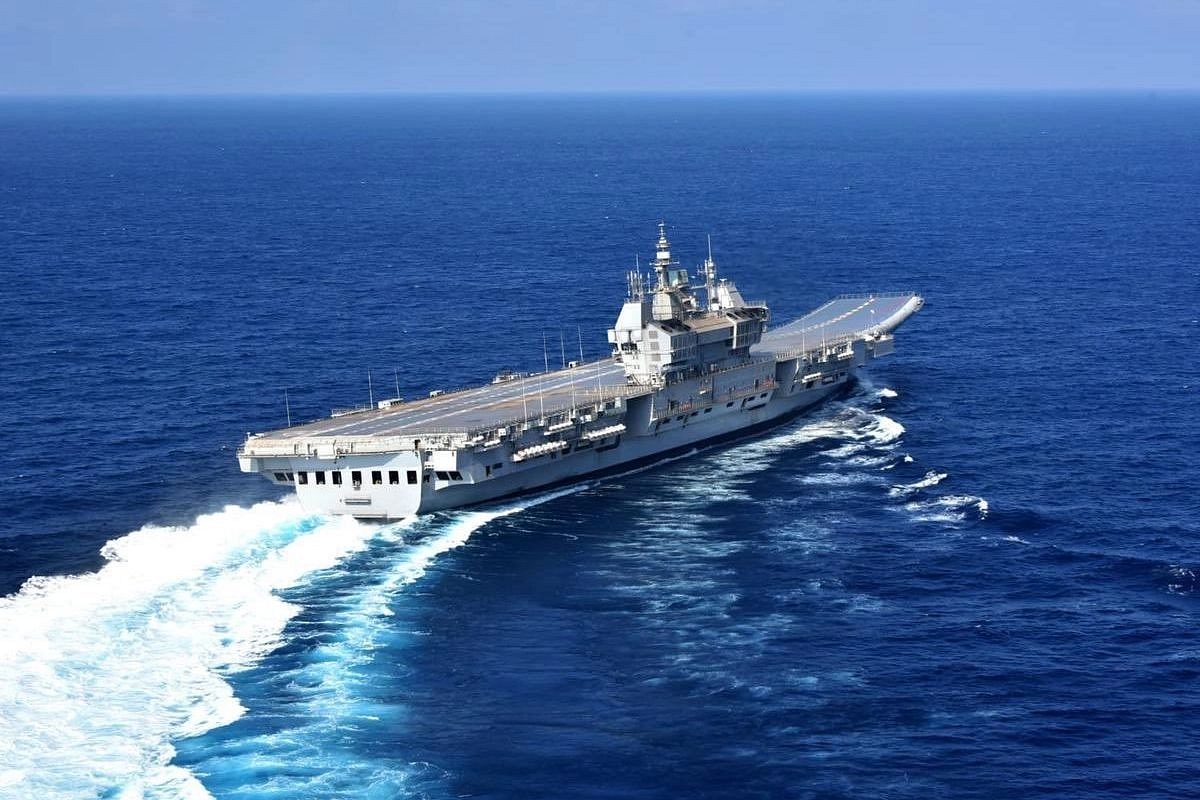Context
Does India Need A Third Aircraft Carrier?

INS Vikrant.
With the commissioning of INS Vikrant today, an old debate has been reignited. And the defence establishment is divided.
Context: PM Modi commissioned India's first indigenously built aircraft carrier at Kochi.
India has joined a select group of nations, like the US, the UK, Russia, China, and France, capable of designing and building an aircraft carrier.
Now, the Indian Navy has two aircraft carriers — INS Vikramaditya and INS Vikrant.
Well, then... Do we need another one?
Yes and no. Within the security establishment, opinions are divided about the need and utility of an additional carrier.
The former chief of defence staff, General Bipin Rawat, had argued that acquiring more submarines to boost under-sea capabilities must be a priority, since the submarine fleet is dwindling.
The then Indian Navy chief, Admiral Karambir Singh, had said, on the other hand, that a new 65,000-tonne aircraft carrier remains non-negotiable.
The case for it: The Navy has called the third aircraft carrier an operational necessity.
A third carrier is needed to ensure that at least two are operational at all times — one in the east, in the Arabian Sea, and the other in the west, in the Bay of Bengal.
Aircraft carriers are necessary for India to have the capability to dominate the Indian Ocean and project power away from its shores, as shore-based assets are limited by their range.
The Navy's take. Recall what the Navy said in the National Maritime Security Strategy, 2015.
"Aircraft carriers are central to fleet operations and the concept of sea control, as they offer flexibility and versatility of a very high order."
"These mobile airfields combine substantial integral air power with mobility, to provide ubiquitous and enhanced combat power across vast maritime spaces, and the advantage of rapid redeployment."
The China angle: The rapid expansion of China's Navy, now the largest in the world in terms of the number of platforms, and its ever-increasing presence in the Indian Ocean region is a factor.
Their Navy currently have two operational aircraft carriers, Liaoning and Shandong.
Just last month, they launched a new 80,000-tonne carrier called Fujian.
Indian experience: As the gestation period for such projects is long, India must start now to capitalise on the learnings and capabilities developed during the construction of INS Vikrant.
Supporters of the idea argue that if the development of the next carrier does not take off now, the capabilities developed would be lost.
The case against it: Concerns have been expressed about the utility of the carrier, costs involved, and alternatives available.
Vulnerability: The development of anti-access/area denial (A2/AD) capability to deny the adversary's naval assets including carriers, like China's DF-21D and DF-26, has sparked questions on the survivability of aircraft carriers.
A case has been presented, instead, for more submarines in India.
Quote. "We are not expeditionary forces that have to deploy around the globe. We have to guard and fight only along our borders and, of course, dominate the Indian Ocean Region," General Rawat said in 2020.
"I think the Navy needs more submarines rather than aircraft carriers, which themselves require their own individual armadas for protection," he added.
India's submarine situation. The Indian Navy have fewer submarines than it needs.
Most of India's conventional submarines are around 20 to 30 years old and will have to be replaced over the next decade anyway.
The Navy will have to invest heavily in its submarine arm over the next few years.
The debate continues: While the Navy insists on a third aircraft carrier, the government takes its time to announce its decision formally. We might have to get comfortable here for a while.
Support Swarajya's 50 Ground Reports Project & Sponsor A Story
Every general election Swarajya does a 50 ground reports project.
Aimed only at serious readers and those who appreciate the nuances of political undercurrents, the project provides a sense of India's electoral landscape. As you know, these reports are produced after considerable investment of travel, time and effort on the ground.
This time too we've kicked off the project in style and have covered over 30 constituencies already. If you're someone who appreciates such work and have enjoyed our coverage please consider sponsoring a ground report for just Rs 2999 to Rs 19,999 - it goes a long way in helping us produce more quality reportage.
You can also back this project by becoming a subscriber for as little as Rs 999 - so do click on this links and choose a plan that suits you and back us.
Click below to contribute.
Latest